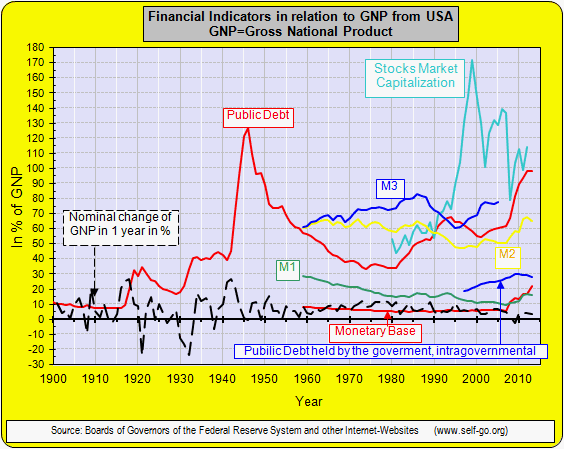3. The problems and consequences of capitalistic
money allocation
In the last chapter wie did see the difference of income
through the ownership of material things and the income through
the ownership of rights. It is possible to be a shareholder on
other income or to be a shareholder on other material property.
If somebody is the shareholder of material property, the value of
the share can be calculated with a price and itself can be selled
only after an agreement. The real problem exists, if somebody is
the shareholder of other income. This is in capitalistic
economies the true and sad reality. Therefore the dependant
workers establish coalitions and they name such organizations trade
unions. On
the other side are standing the unions of the employers.
They know, that the income of every company can be distributed
only one time to the workers and the owners. But first the
companies must pay the taxes to their government and in most times
premiums to the assurances. Usually for the future of the industrial
company it is necessary to repair and to substitute machines and
robots. Hence a big part of the income of company is not
available for consuming purposes. That means the distribution of
the remaining money is not easy. Usually the struggle about the
money of the companies is only an affair of the representatives
of the workers and the employers. After long and hard
negotiations they confirm their agreement with a contract. But
sometimes an agreement is not possible without strikes of the
workers or lockouts of the employers. In every case the situation
of the firms in a labour dispute are difficult. The management of the
companies
calculate the wage of the workers and the salaries of empoyees as
fix costs like the prices for raw materials. Only their own
income and the income of the employers of course is not bound
with contracts. Therefore the management has to defend more the
interests of the employers than the interests of the workers.
In order to fulfill the contracts with the workers and to keep
the level of dividends with the employers and to defend their own
privileges it is a wellknown practice to ask the banks for
credits. Usually they get easily financial support of the bank
for new investments. And it is usual too, that the private firms
have to pay redemption and interest to the banks. Capitalistic
economy is not thinkable without the power and the credits of the
banks. Oftenly the banks are more the owners and deciders of a
company than the official employers. That means the most firms
must pay much more interest to their creditors than dividends to the
stockowners and oftenly the stocks are also property of the
banks.
The struggle about the distribution of the income of private
companies is a struggle with consequences. Such companies have
less money available than it is necessary for their optimum
existence. Therefore they have not enough possibilities for new
investments and to sell their products with lower prices. They
don' t offer more jobs although many unemployed persons ask for
jobs. Why?
Usually the company has not enough demand and credits from the banks
reached the limit and therefore the managements of the company
can' t lower the prices of their products. These and similar
answers reflect the situation of the most companies in a
depression. And if we ask an economist or an politician about the
origin of such economic situation, oftenly they tell us, that
many jobless don't want work because of their laziness and
because they get to much unemployment benefit.
But not all economists and politcians are convinced that the
laziness of the workers depends only from the business cycle.
They remenber to one of the most famous economists. John Maynard
Keynes 1883-1946 maintained that the responsible politicians
especially the secretary of state for the finances should make an
anticyclical policy with their national budget. That means in
boom times the secretary of state for the finances should save
money. This is possible, if the amount of the tax revenues is higher
than the amount for the expenditures. In the era of the next step
of the cycle, in the times of depression, the politician can
neutralize the depression with the instrument of deficit
spending. If the government distributes more money to the people
through the salaries of the government employees and through
social benefits investments in state-owned buildings und
so on than it gains through the taxes and social contributions, the
state can supply the
private companies with the necessary money.
There is no dispute by the politicians and the science that an
anticyclical financial policy with the national budget is a
necessary instrument for steadiness of the economic development.
But with this form of financial policy the problems are not
solved. Because it seems to be that the capitalistic economies
stay much more in the bottom of a cycle than at the top of the
cycle. Depression is the norm and boom is the exception. And even
if a boom goes many years it is not enough to eliminate unemployment.
Now we can recognize another instrument to help the private
companies. Beyond the treasury policy with the national budget it
is possible to make monetary policy with the central bank. The
central banks lend the business banks coins and banknotes and
they demand a discount rate. From the discount rate depends the
volume of the available banknotes and the level of the interest
rates. A growing volume of the central bank money is a
requirement for a growing volume of the capital in form of bonds
and stocks. In the economic science they talk about the money
volume M0, M1, M2, M3 and M4.
